Ancient village in the middle of Pleiku mountain town
Plei Op Village is located in Hoa Lu Ward (Pleiku City) with an area of over 100 hectares. Established around 1927 with 15 households and 76 people, Op Village now has about 130 households with 650 people. Planned to become the first Cultural - Tourist Village of Pleiku City, Plei Op is an ideal destination for tourists who want to experience the unique culture of the Jrai people, an indispensable part of the traditional cultural heritage of the Central Highlands.
Accordingly, coming to Plei Op village, visitors will learn about traditional crafts that are still preserved by the villagers such as: weaving, brocade weaving, carving statues, making traditional musical instruments. Visit the traditional water drop or the tomb area with wooden statues, jars of wine still remaining under the old banyan tree, all are still preserved intact.
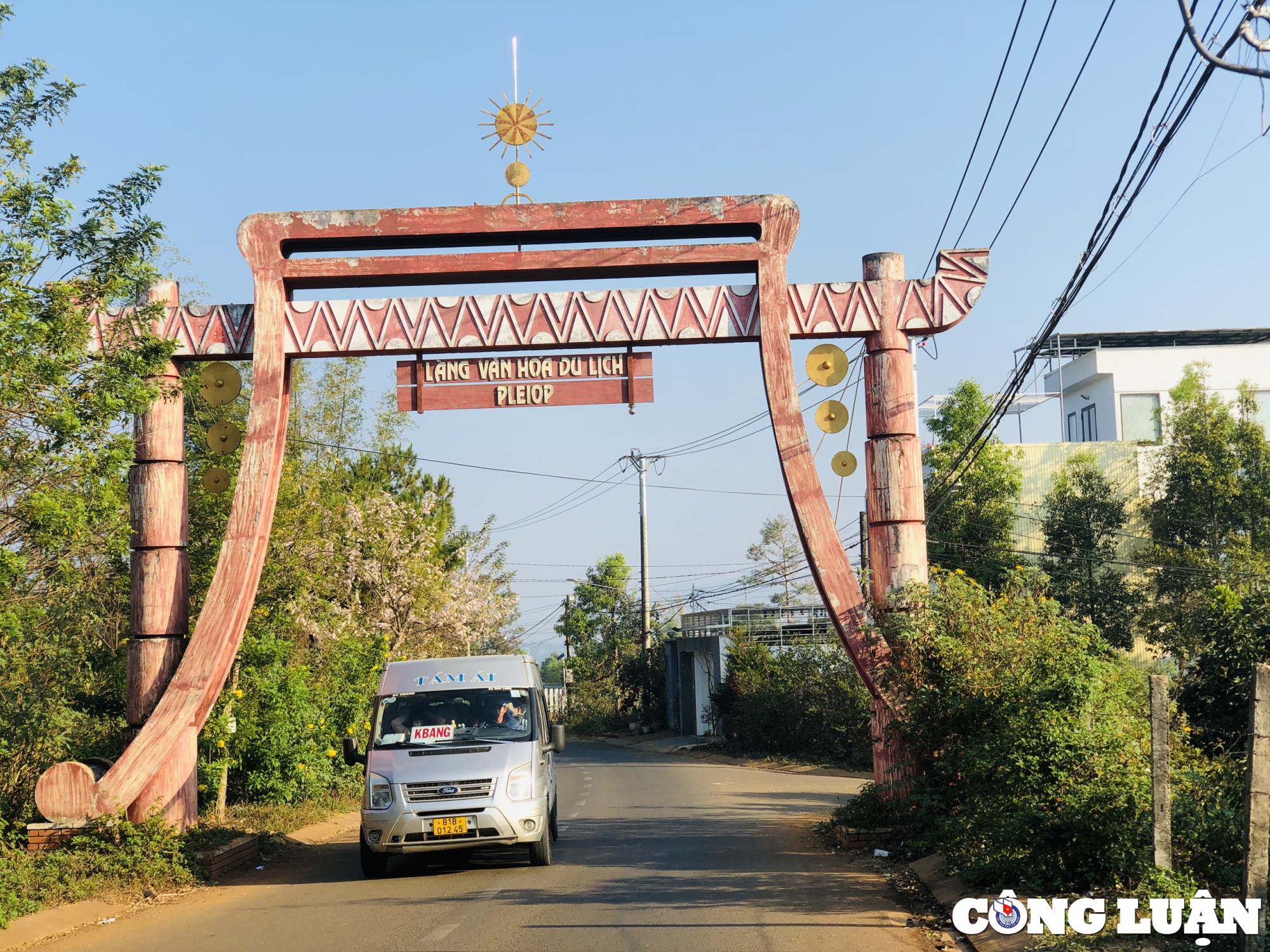
Plei Op - ancient village in the city
The first highlight when coming to Plei Op village is the village gate and the traditional communal house roof, which is also considered the “heart” and soul of the village, a cultural symbol of the village. The communal house is shaped like an axe and was created by artisans in the village entirely from traditional materials such as wood, bamboo and rattan.
Inside the traditional communal house roof, dozens of gongs are kept. Around the communal house, there is an area displaying wooden statues. These wooden statues depict every aspect of life, from gong and drum performances, xoang dance, to farming, hunting, drinking rice wine...
Previously, for the Jrai people, wooden statues were only for the deceased and were displayed in tombs. But after a long period of ideological reform, they have now become decorations for the village, becoming a cultural messenger of Plei Op village. Not only that, these wooden statues also contribute to making people understand better, have a more intuitive view of the artistic and cultural value of this type of intangible heritage.
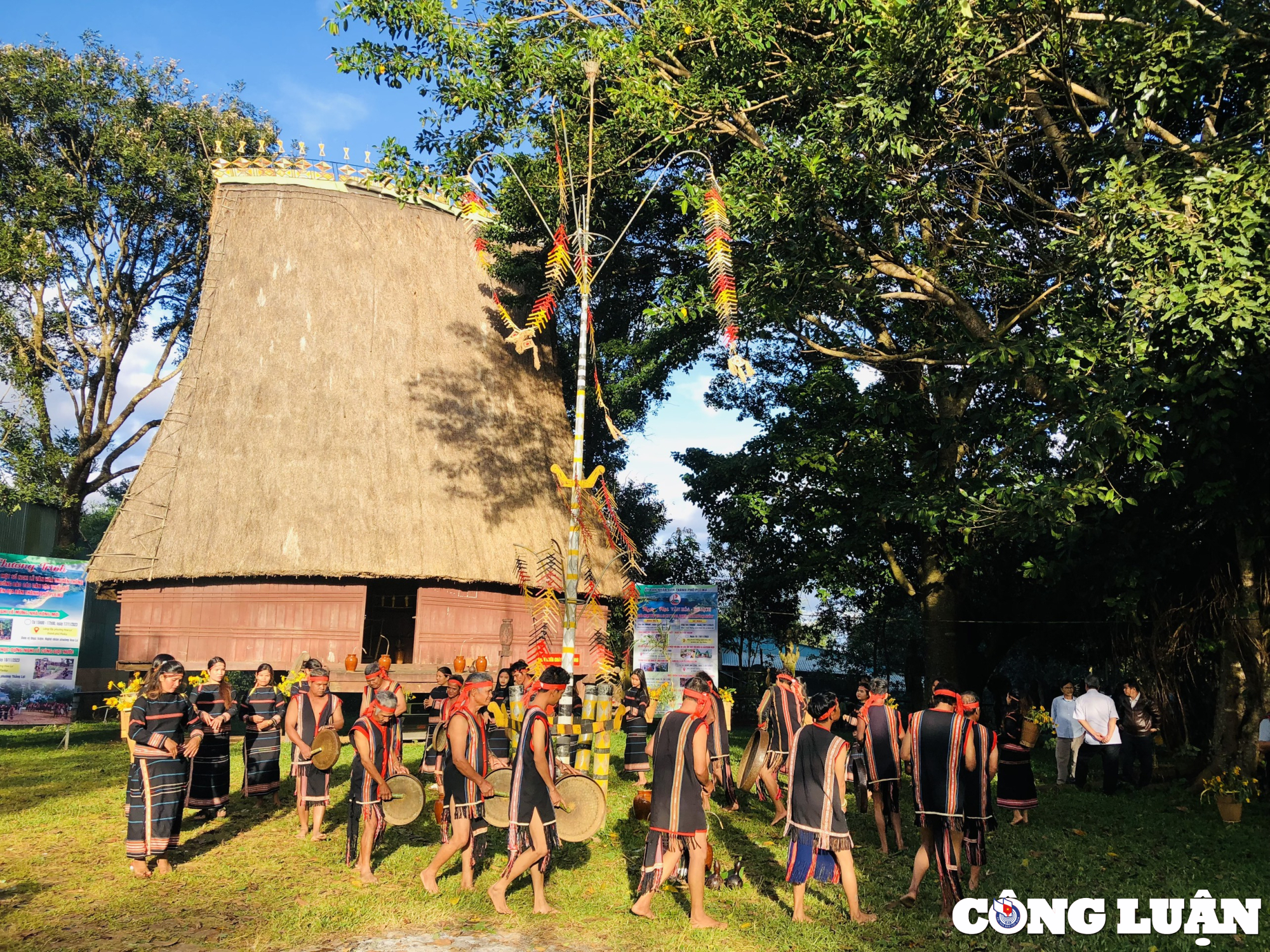
Traditional communal house roof - the heart of the village
Although located in the heart of Pleiku City, Op village is surrounded by Ia Lam valley, two clear streams Ia Nin and Ia Nak, babbling day and night, gently embracing the village, making the scenery even more poetic and peaceful.
In recent years, with the attention of all levels and sectors, local authorities have taken many steps to improve the quality of life of the people as well as preserve and develop indigenous cultural values. Along with that are activities to improve infrastructure such as: Completing the lighting system, clean water system; expanding village roads; building cultural communal houses with traditional appearance...
Recreating many traditional rituals associated with tourism development
Mr. Le Van Quang - Chairman of Hoa Lu Ward People's Committee said: "In order to preserve and promote national cultural identity and develop tourism in the area, many years ago, Pleiku City People's Committee supported and equipped a traditional gong ensemble... thereby creating favorable conditions for welcoming and performing arts to serve tourists.
At the same time, investing in the formation of a folk wooden statue garden to introduce the Jrai wooden statue model; repairing the long house with a budget of billions of dong; repairing and embellishing the village's water drop area; organizing a gong playing class for more than 30 young people in the village... In addition, the Department of Culture, Sports and Tourism also organized a training class on community tourism knowledge, attracting dozens of households to participate.
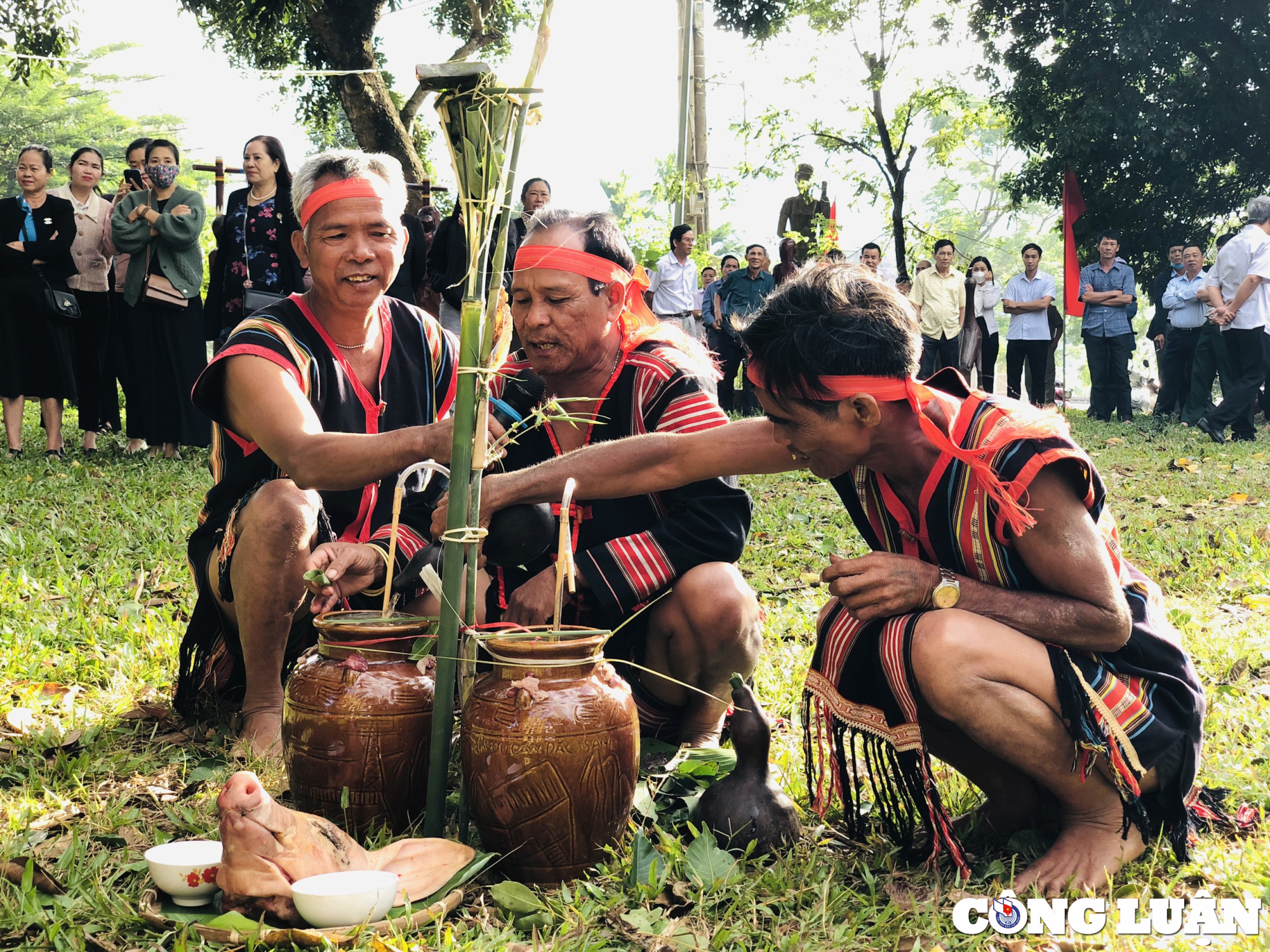
The new communal house worshiping ceremony was performed under the roof of the communal house of Plei Op village.
With the above efforts, Plei Op Cultural Tourism Village seems to have put on a new coat, becoming more and more spacious and clean, the villagers have become aware of preserving and promoting the traditional cultural values of the nation. The gong artisans regularly maintain practice, participate in performances at cultural and artistic programs organized by the city and province.
In particular, the villagers have formed a local cultural experience tour to serve tourists. From the end of 2019 to the beginning of 2020, Op village welcomed the first domestic tourist groups. The village's gong and xoang dance artists confidently served tourists traditional gong songs, enjoyed grilled chicken and bamboo rice, and typical dishes of the Jrai ethnic group. From here, the villagers have had income from tourism activities (VND 2,800,000/tourist group).
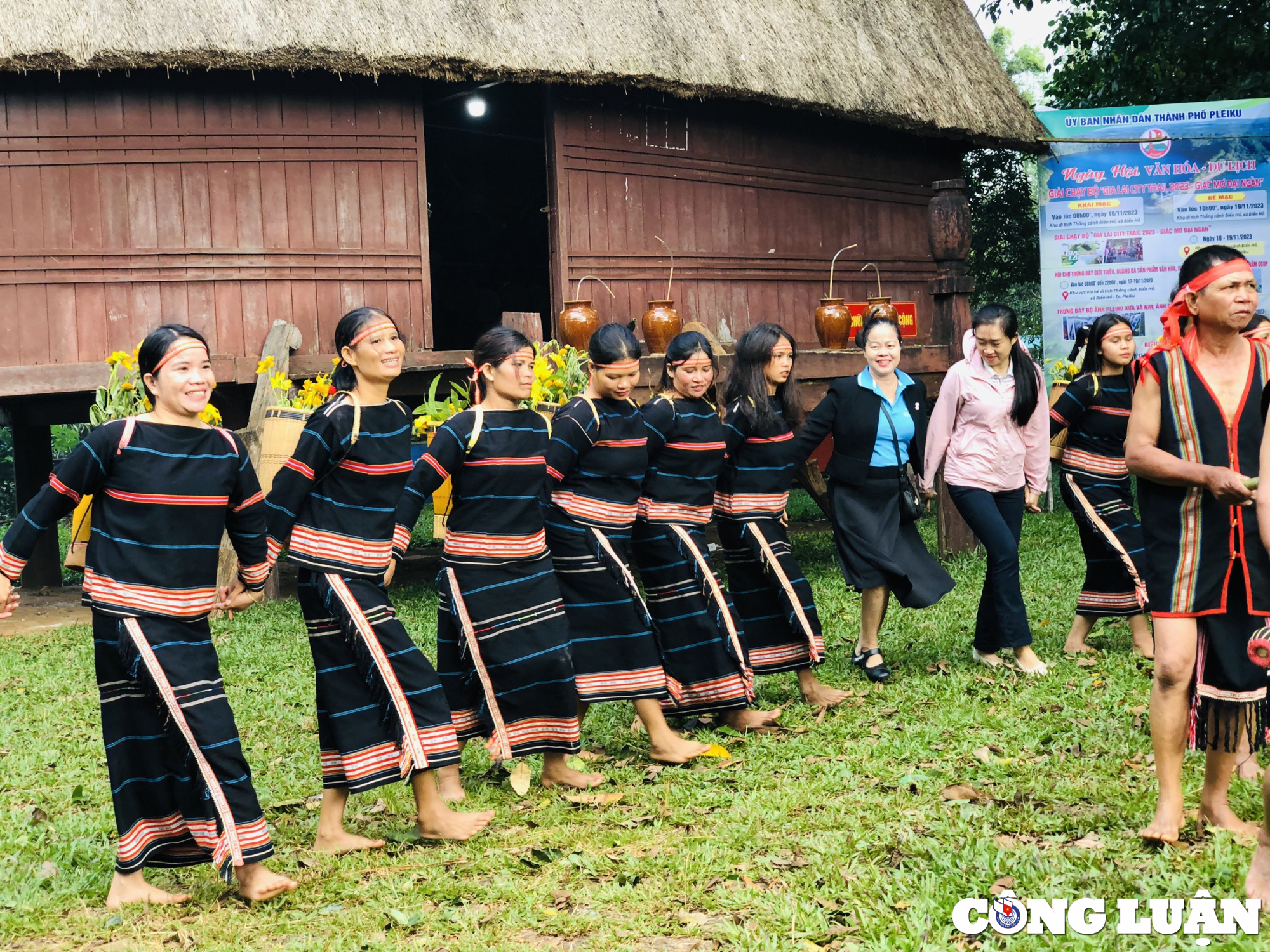
This is the first Cultural - Tourist village of Pleiku City.
Recently, within the framework of the Pleiku City Cultural - Tourism Festival 2023, the delegation of artisans of the village and ethnic minority villages in Pleiku City participated in recreating a number of traditional cultural rituals of the ethnic group at the communal house of Plei Op village such as offering water drops, celebrating the new communal house...
Village elder Siu Nui shared: “At the provincial festivals, the village also participates in recreating many rituals, including the new communal house celebration - one of the unique traditional cultural values that the Jrai people always attach special importance to. The new communal house celebration is to thank the gods for always helping the villagers, hoping that when they move to the new communal house, the gods will continue to bless the villagers with health and peace.
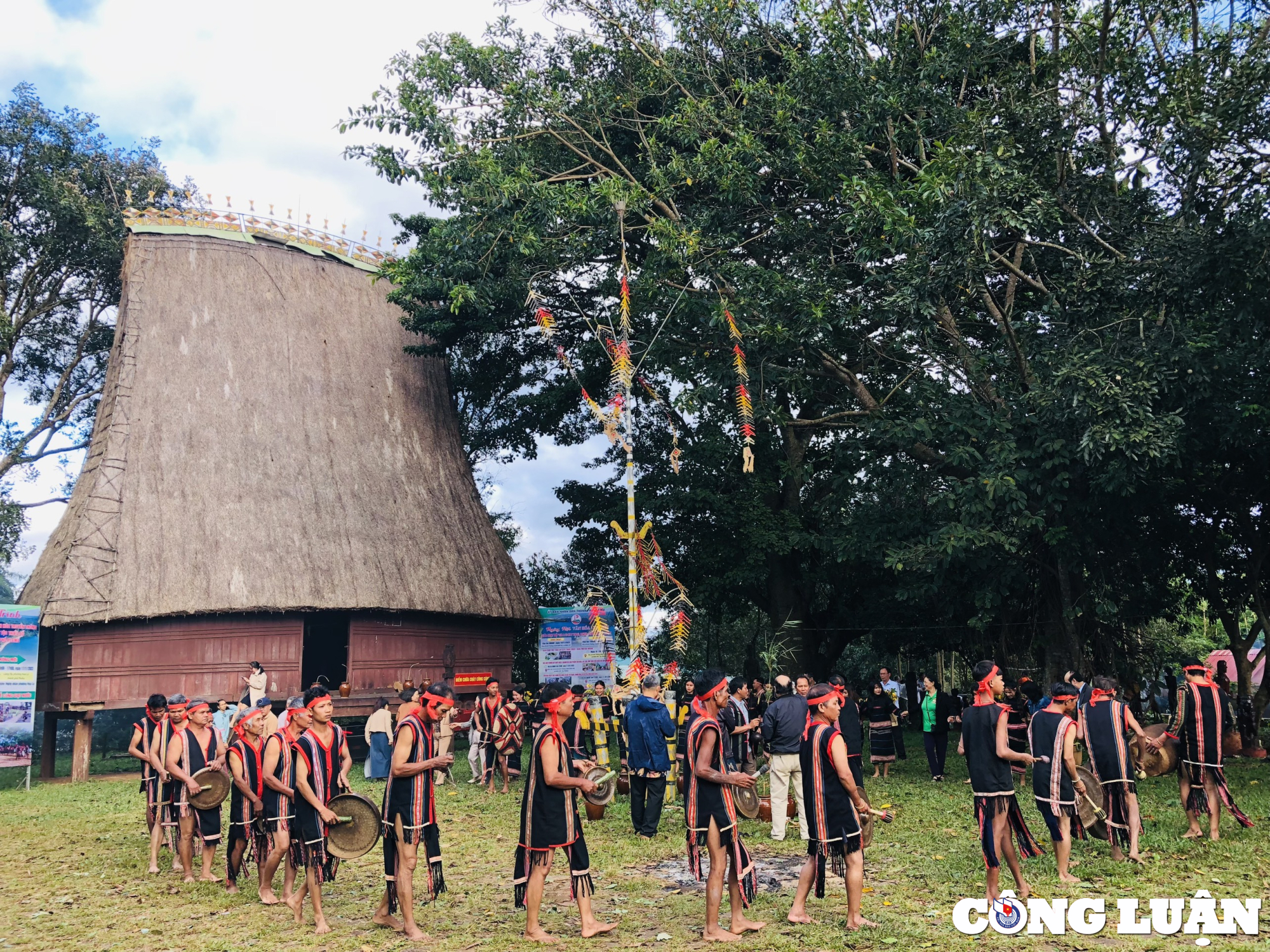
The village's gong and xoang dance artists confidently serve tourists with traditional gong performances during festivals.
In order to recreate the rituals in their original form, the village elders and village chiefs mobilized the participation of village members, guided the villagers to prepare all the offerings and directly performed the rituals. When participating in the reenactment of the rituals, the members all felt proud of their ethnic cultural origins.
Mr. Le Van Quang said: “Organizing the restoration of traditional rituals of the Jrai ethnic community is of great significance in preserving traditional cultural values. Through the restoration events, people have the opportunity to return and practice rituals and festivals that are at risk of being lost. Through this, the younger generation will be able to see and feel a part of the ethnic culture, love it more, and be aware of preserving the unique features of traditional culture. In the coming time, the Ward People's Committee will guide Op village to restore and reorganize some life cycle rituals according to the traditions of the Jrai people.”
Article and photos: Tran Hien
Source



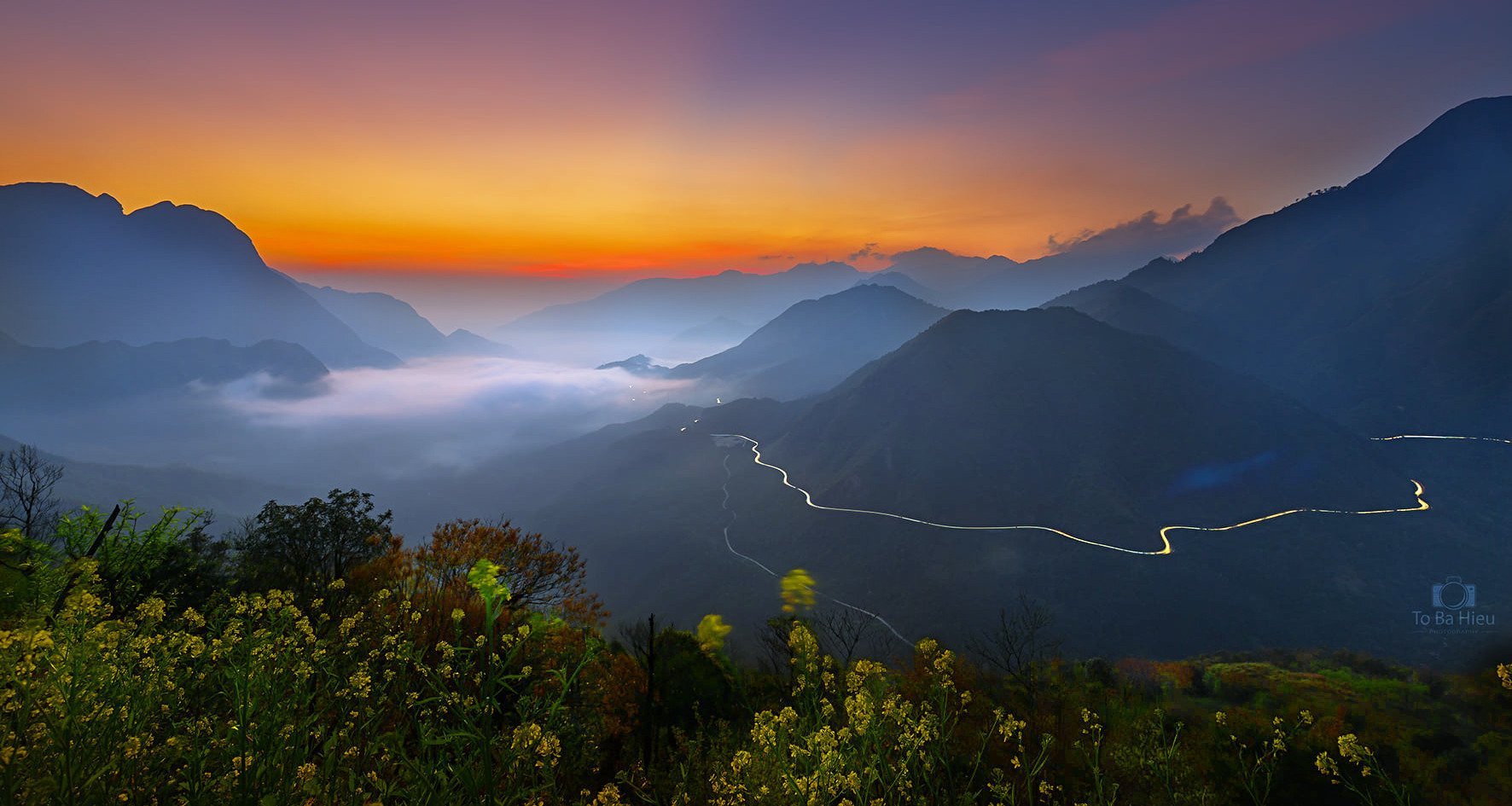
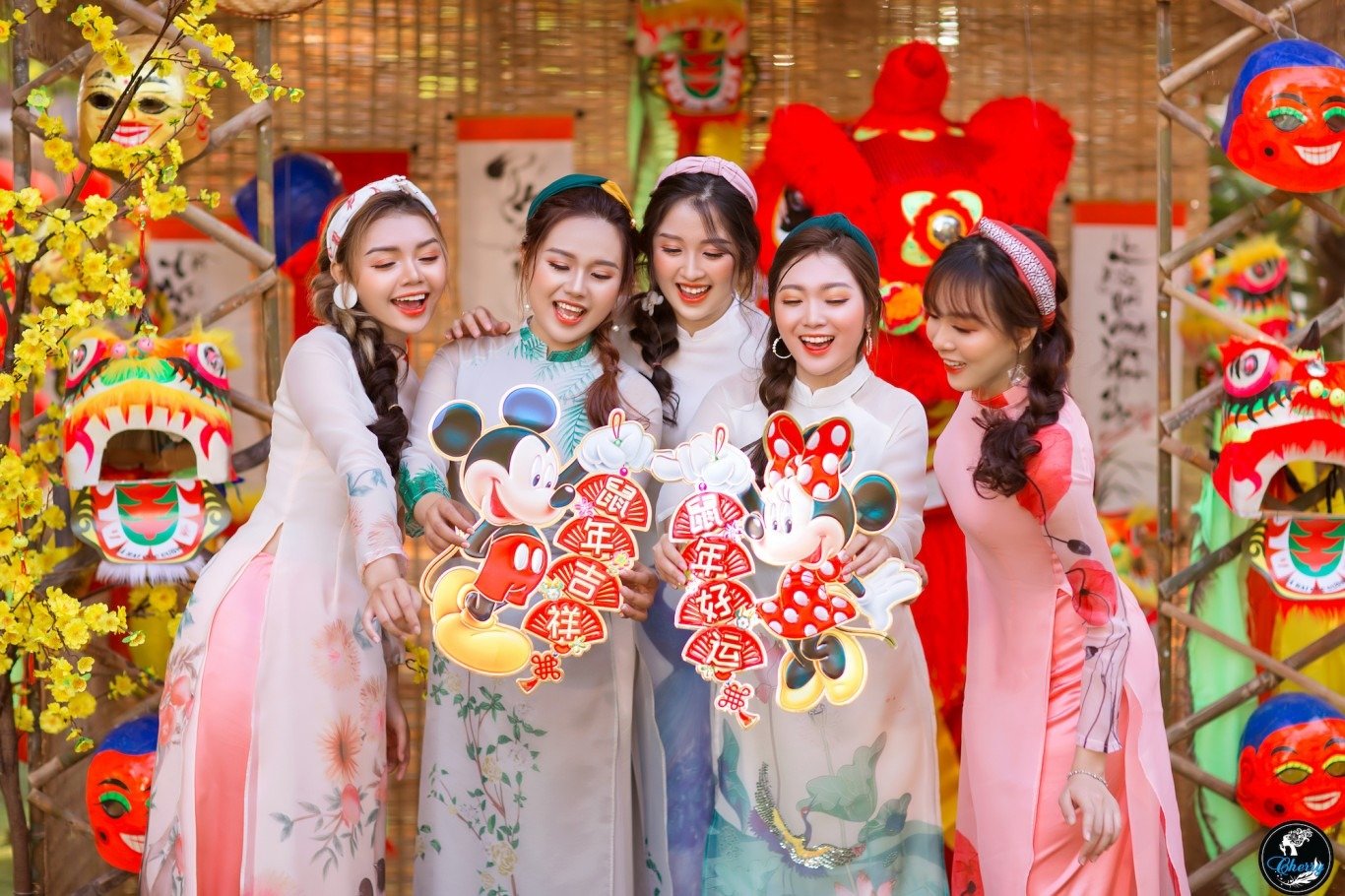
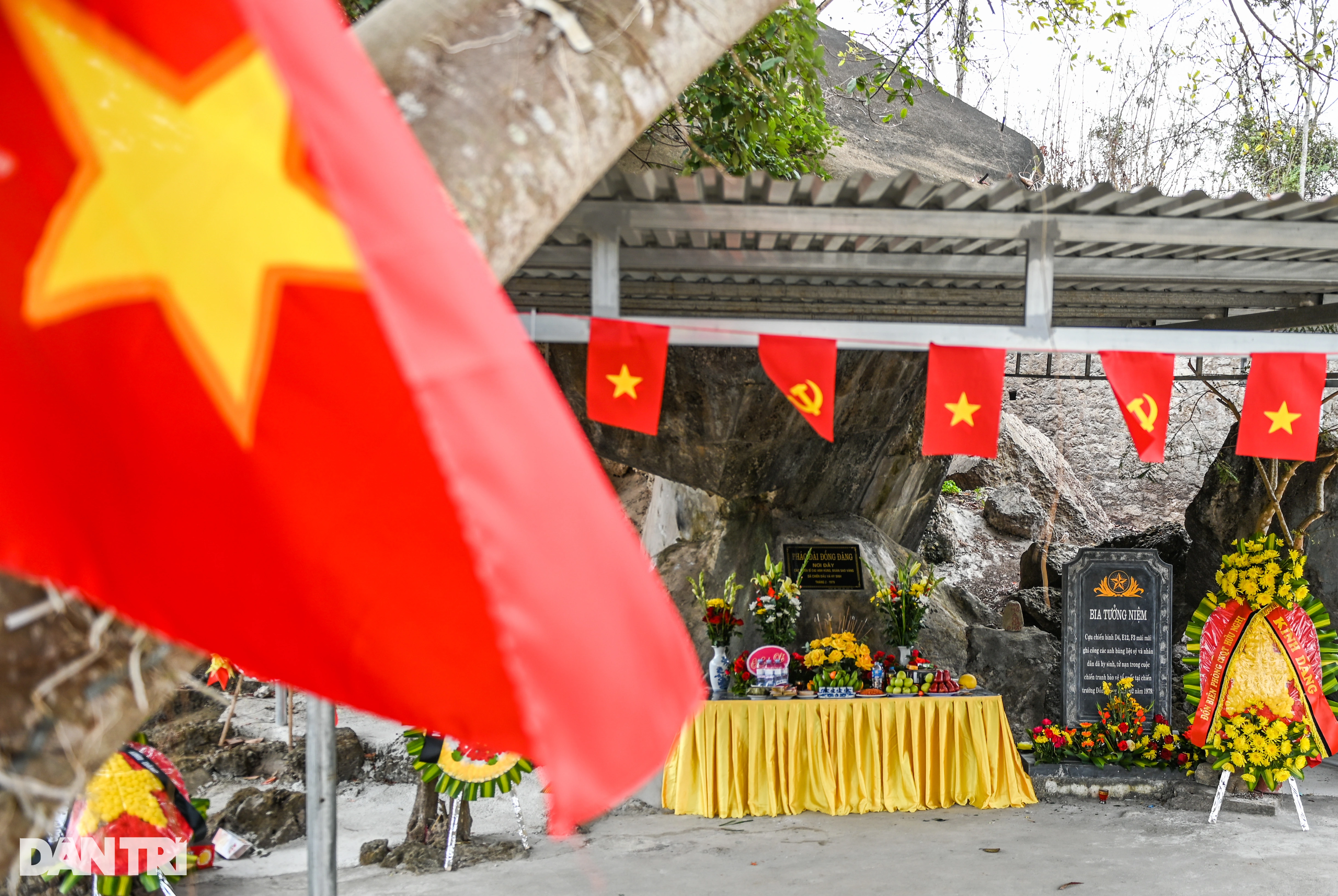
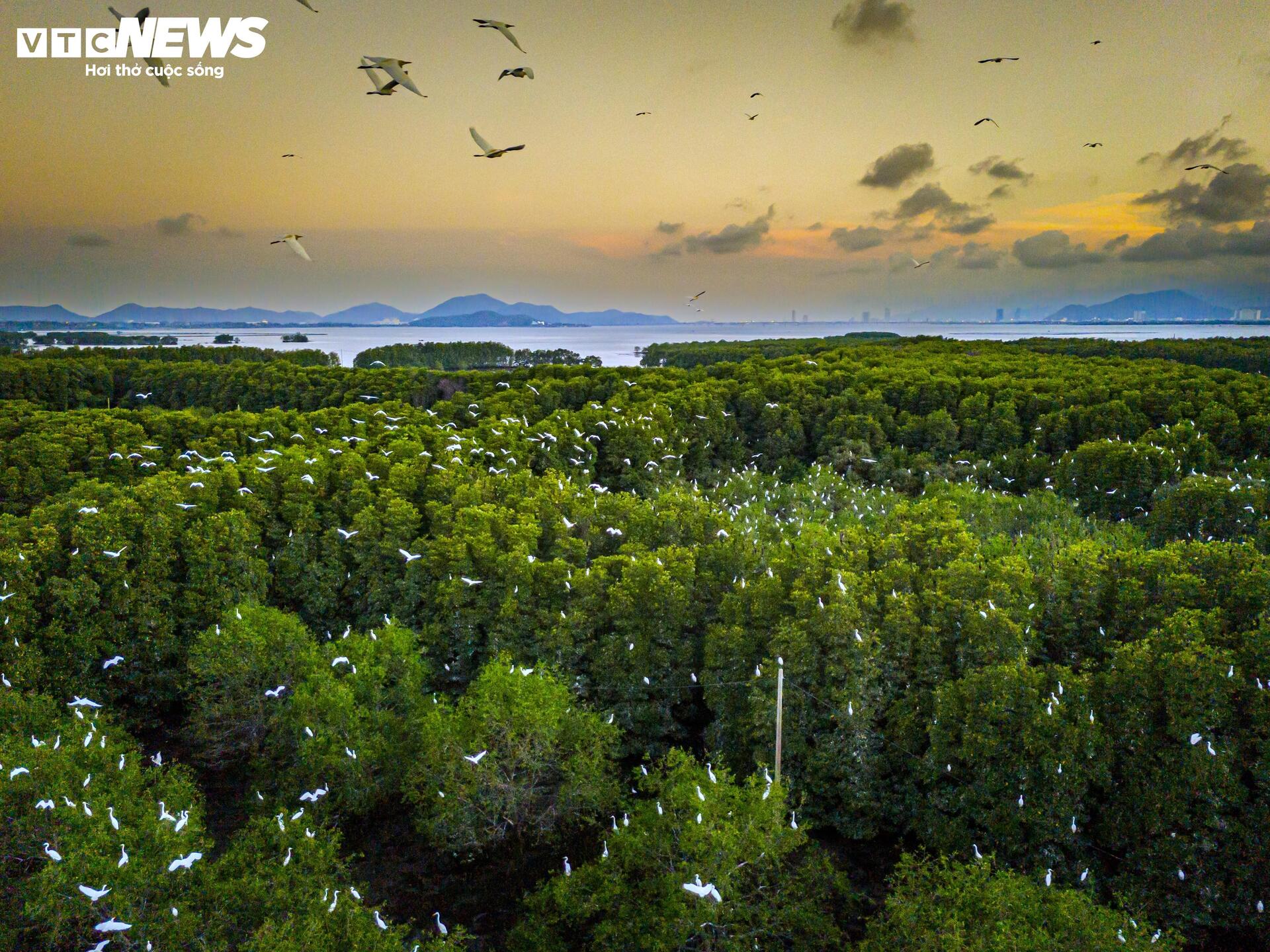























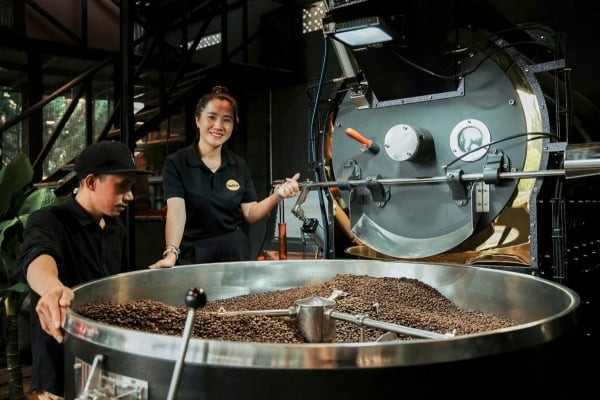

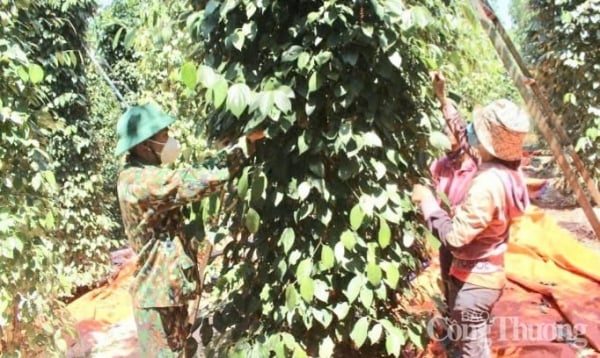
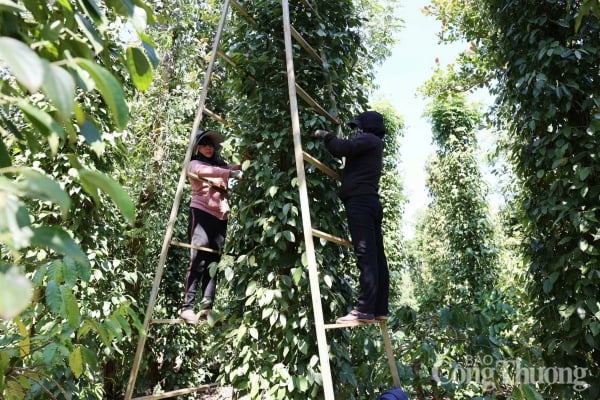
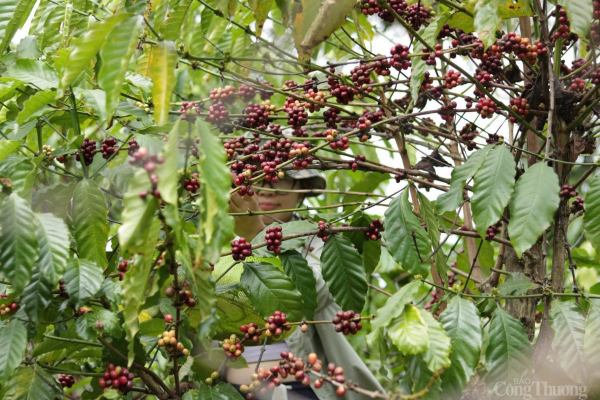
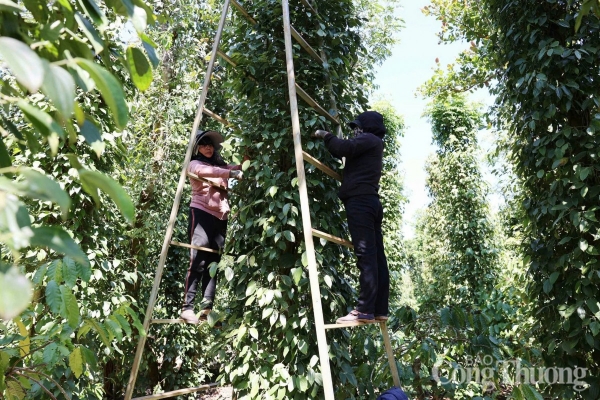
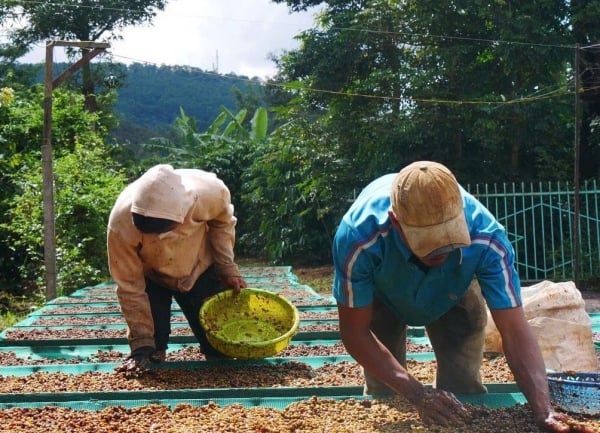
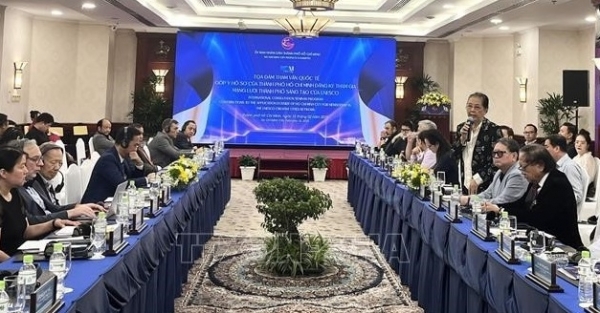

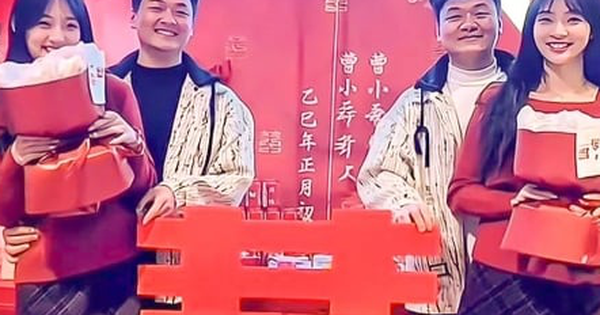

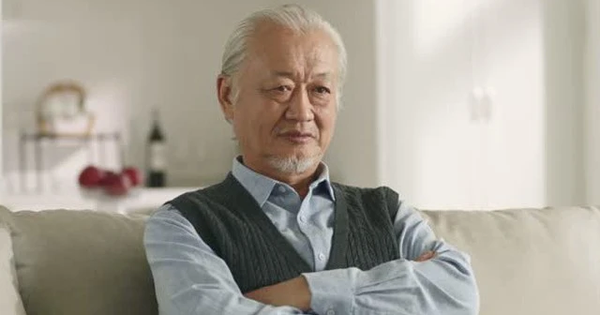
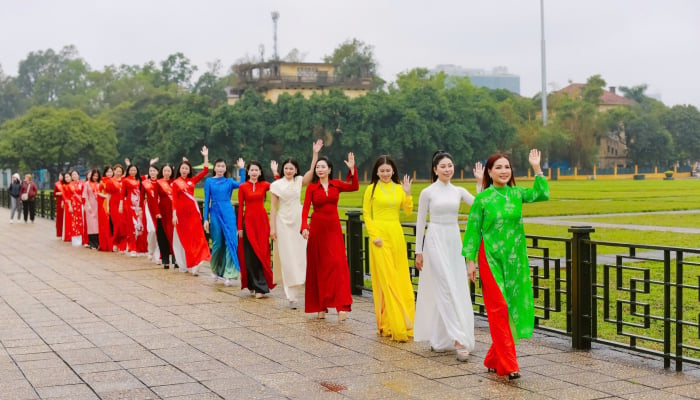
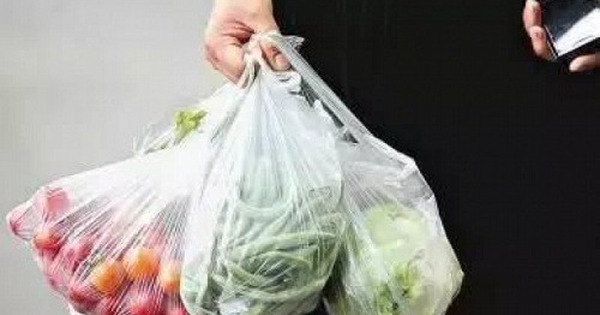
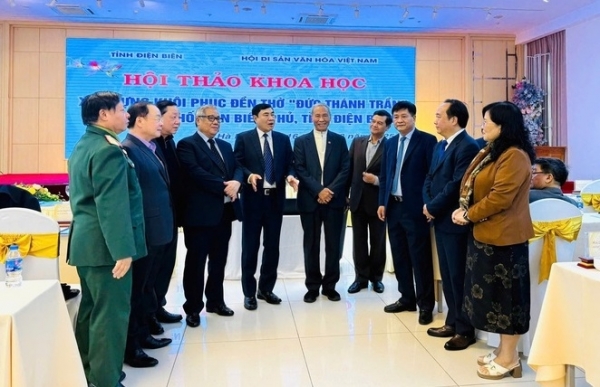

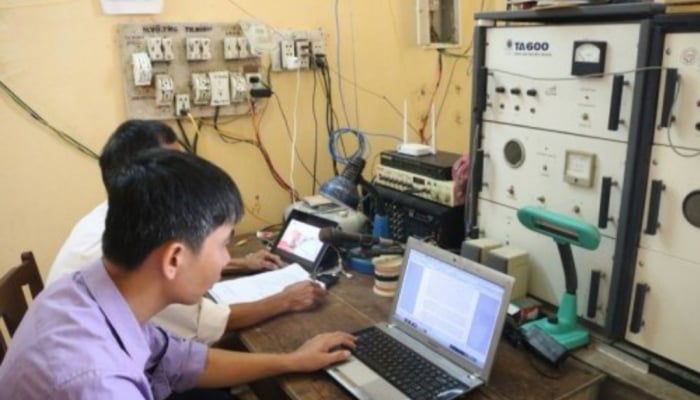
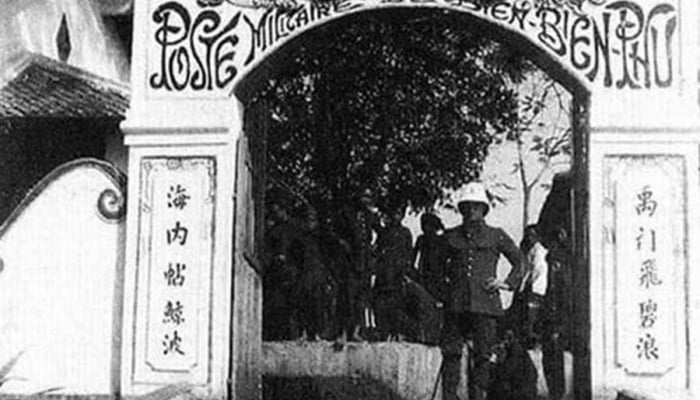
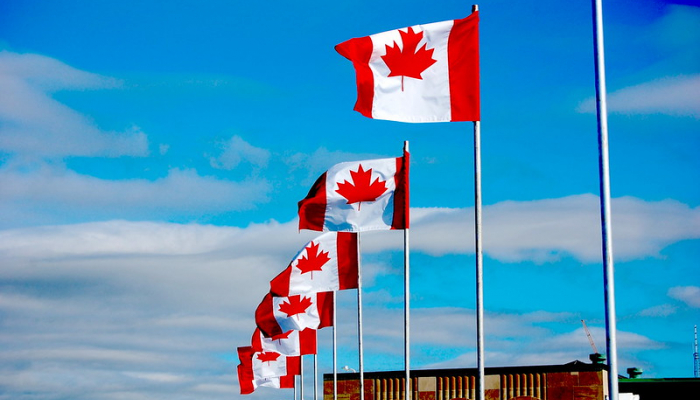
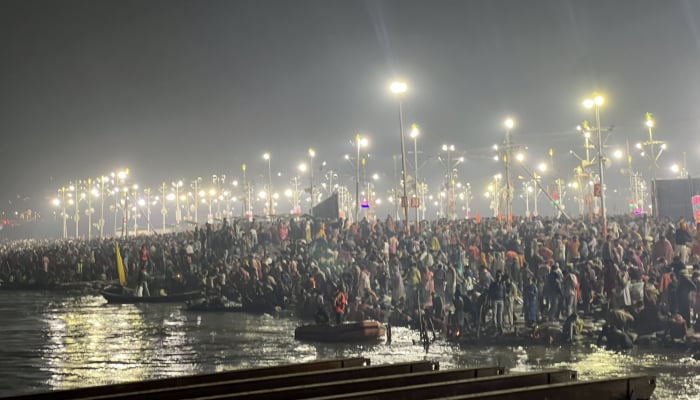
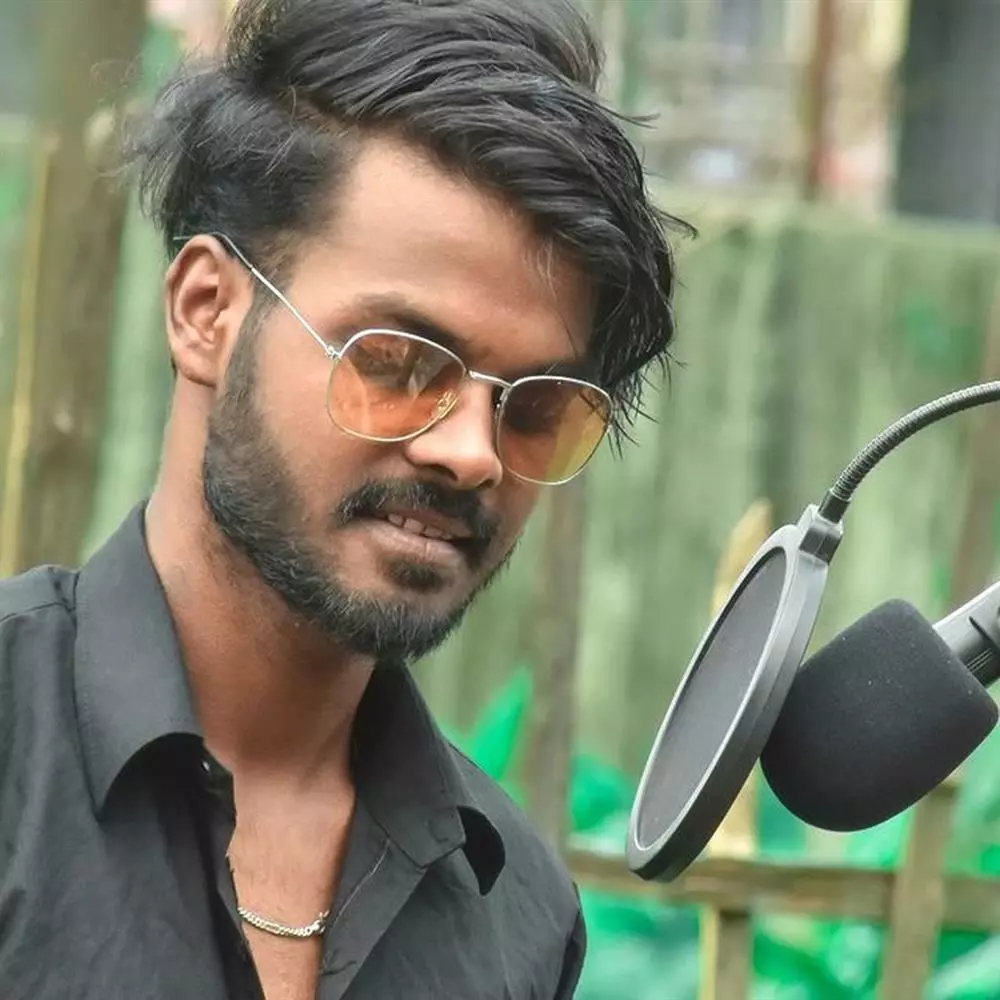

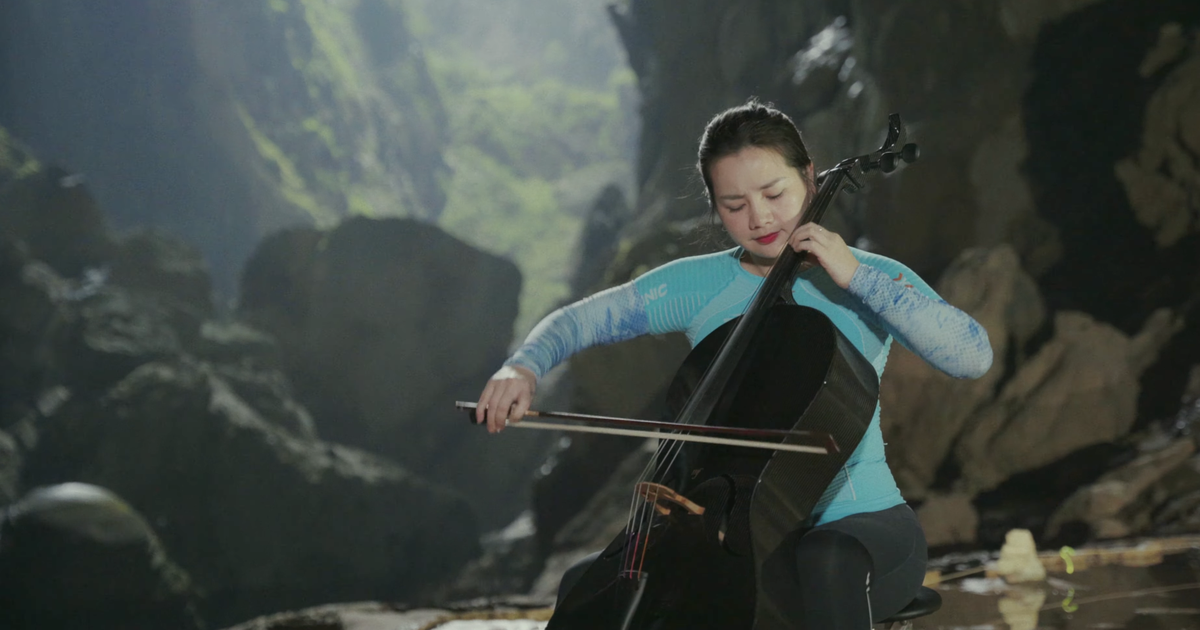

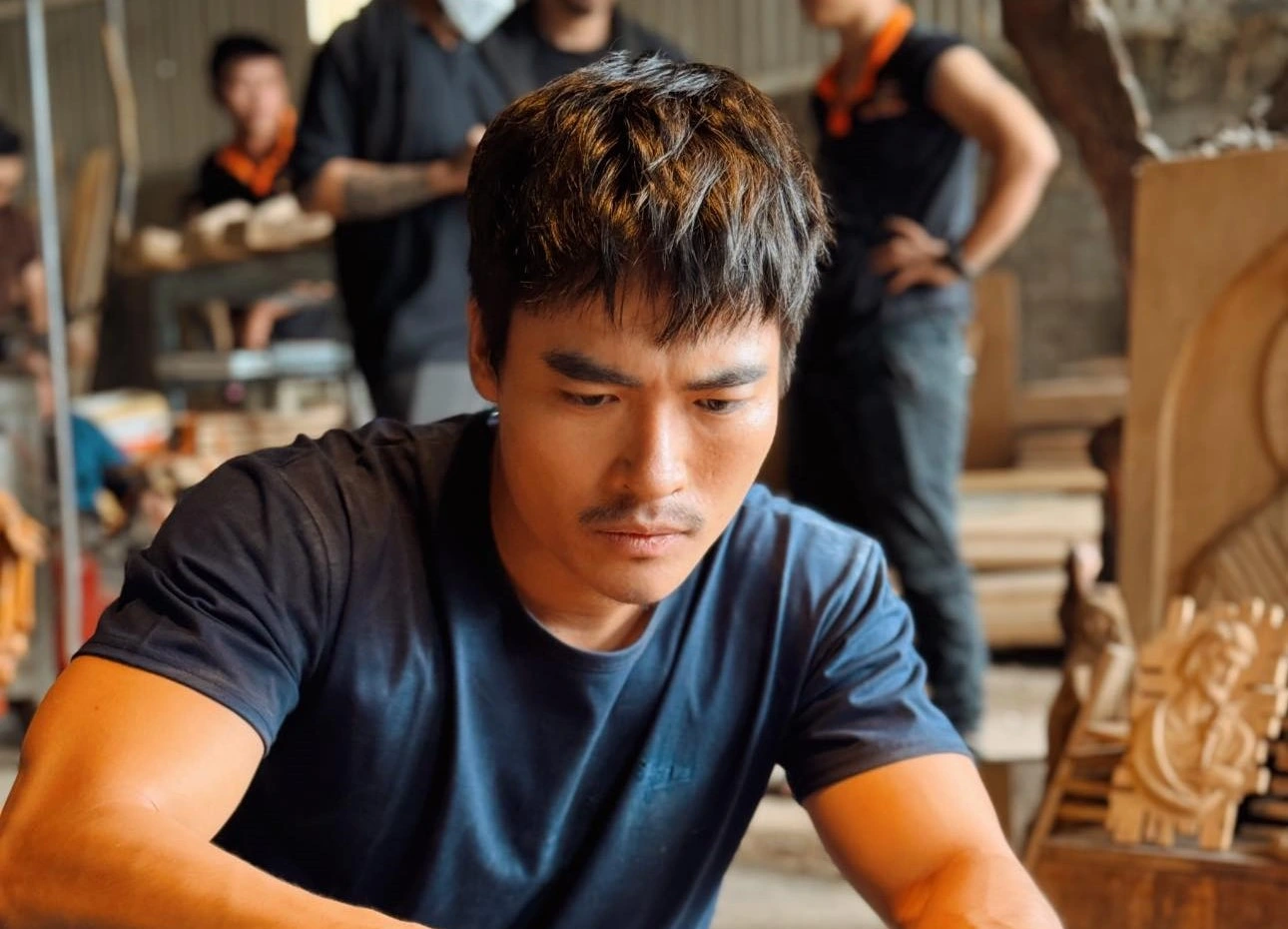









Comment (0)